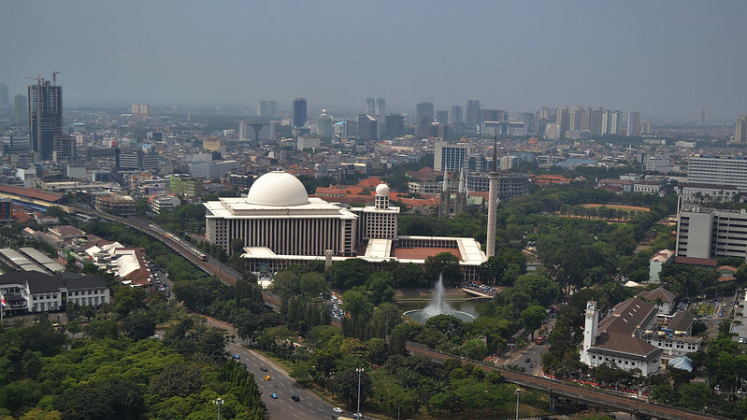Within international law there are significant frameworks contributing to the promotion of religious tolerance and the peaceful coexistence of diverse religions. But challenges emerge in the implementation of them. In this blog, Nazanin Baradaran explains those challenges and the subsequent opportunities should we successfully overcome them.
 .
.
In the tapestry of the 21st century, the world unfolds as an intricate mosaic, rich with diverse cultures, languages, and religions. This diversity, a testament to human plurality, brings with it a vibrancy and depth that shapes our global narrative. However, it also presents a complex challenge, particularly in the context of religious coexistence. As nations and communities become increasingly interconnected, the interplay and, at times, the contention between different religions have come to the forefront of global discourse. This phenomenon is not just a cultural or social dynamic but also emerges as a critical issue within the sphere of international law. The concept of peaceful coexistence between religions, once perceived as a moral or philosophical ideal, has now evolved into a legal and geopolitical necessity.
The role of international law, in this context, becomes paramount. Legal frameworks, such as the Universal Declaration of Human Rights (UDHR) and the International Covenant on Civil and Political Rights (ICCPR), provide the foundational principles for religious tolerance and freedom. They are more than legal documents; they are beacons of hope and instruments of change, guiding the world towards a future where respect for religious diversity is not just encouraged but mandated. The United Nations, through these frameworks and its various agencies, plays a pivotal role in this endeavour. Its efforts to promote interfaith dialogue, understanding, and cooperation are essential in bridging the gaps between different religious communities.
However, the path towards religious harmony is fraught with challenges. The implementation of international legal provisions often stumbles upon the hurdles of political will and cultural resistance. In some regions, governments use religion as a tool to consolidate power, while in others, laws and practices discriminate against certain religious groups. Despite these obstacles, there are emerging opportunities that can be leveraged to promote religious tolerance. The interconnectedness brought about by globalisation and the digital revolution opens new avenues for dialogue and understanding. Social media, online platforms, and other forms of digital communication can be powerful tools in spreading messages of peace and tolerance.
Moreover, the involvement of religious entities and leaders is crucial in this process. Their influence and authority can be instrumental in fostering a culture of respect and acceptance. Interfaith initiatives, educational programs, and community engagement are some of the ways through which religious entities can contribute to reducing conflicts and promoting peace. In fact, as we navigate through the complexities of our modern world, the necessity for cooperation across nations, legal systems, and religious entities in decreasing conflicts becomes ever more evident.
International legal frameworks promoting religious tolerance
The landscape of international law is notably marked by significant frameworks that contribute to the promotion of religious tolerance and the peaceful coexistence of diverse religions. Central to these frameworks are the Universal Declaration of Human Rights (UDHR) and the International Covenant on Civil and Political Rights (ICCPR), which collectively lay the groundwork for global standards in religious freedom.
The Universal Declaration of Human Rights (UDHR) adopted by the United Nations General Assembly in 1948, represents a foundational milestone in international law. Article 18 of the UDHR is pivotal in guaranteeing the right to freedom of thought, conscience, and religion. This right encompasses the freedom to change one’s religion or belief and the freedom to manifest one’s religion or belief in various forms, including teaching, practice, worship, and observance. Despite its non-binding nature, the UDHR’s influence is profound, serving as a moral compass that guides nations towards universal respect for religious freedom.
The International Covenant on Civil and Political Rights (ICCPR), which came into force in 1976, builds upon the principles set forth in the UDHR. Article 18 of the ICCPR reiterates and legally binds signatory states to uphold the rights enshrined in the UDHR, further emphasising that no one shall be subject to coercion impairing their freedom to have or adopt a religion or belief of their choice. The ICCPR’s binding nature elevates the standard of religious freedom, making it an enforceable obligation for its parties.
The performance and impact of these legal instruments can be evaluated through the lens of various organs and committees established under their auspices. Key among them is the United Nations Human Rights Committee, which oversees the implementation of the ICCPR. This committee regularly reviews state party reports and issues observations and recommendations, playing a critical role in monitoring compliance with the covenant’s provisions on religious freedom.
Another significant body is the United Nations Special Rapporteur on Freedom of Religion or Belief, established by the U.N. Commission on Human Rights in 1986. This independent expert is tasked with identifying existing and emerging obstacles to the enjoyment of the right to freedom of religion or belief and presenting annual reports to the U.N. General Assembly and the Human Rights Council. The Special Rapporteur’s role in highlighting issues and providing recommendations has been instrumental in shaping policies and practices that foster religious tolerance.
However, challenges persist in the effective implementation of these frameworks. Political will, cultural differences, and varying interpretations of religious freedom often hinder the full realisation of these rights. Instances of religious intolerance and discrimination continue to surface in various parts of the world, indicating a gap between the legal provisions and their practical application.
An important evolution in the international human rights landscape was the replacement of the United Nations Human Rights Commission with the Human Rights Council in 2006. This change was more than a mere rebranding; it signified a commitment to enhancing the effectiveness and credibility of the UN’s human rights machinery. The Human Rights Council, established by the United Nations General Assembly Resolution 60/251, plays a pivotal role in strengthening the promotion and protection of human rights globally, including the freedom of religion or belief. The Council’s Universal Periodic Review mechanism has been instrumental in assessing the human rights situations in all UN Member States. This includes a critical evaluation of each state’s efforts to foster religious tolerance and address instances of religious discrimination and violence.
The Human Rights Council’s mandate extends to addressing situations of human rights violations and making recommendations to Member States, which is crucial for the advancement of the peaceful coexistence of religions. Through its Special Procedures, which comprise special rapporteurs, independent experts, and working groups, the Council investigates, monitors, advises, and publicly reports on human rights issues, including those related to religious freedoms. The Council’s actions and resolutions, while not legally binding, carry significant moral and political weight, influencing international norms and state behavior in matters of religious tolerance and interfaith harmony.
The challenges and opportunities in implementing international law for religious tolerance
In the realm of international law, the promotion of religious tolerance faces a complex array of challenges and opportunities. Despite the existence of international legal frameworks advocating religious tolerance, their practical application encounters numerous obstacles. Notably, many countries maintain laws and practices that discriminate against certain religious groups, perpetuating a landscape of religious intolerance and violence. This discrimination is often compounded by a lack of political will from governments, which might fear losing support from certain religious or ethnic groups or exploit religion as a tool for consolidating power.
Another significant barrier is the general public’s limited awareness and understanding of international law, especially concerning freedom of religion. This lack of awareness inhibits individuals from asserting their rights or seeking justice when these rights are infringed.
Conversely, there exist promising opportunities for enhancing religious tolerance through international law. The growing awareness of the nexus between religious harmony and global security serves as a powerful motivator for states to champion religious tolerance. The globalised era’s increasing interdependence among nations further encourages international cooperation in this domain.
Technological advancements, particularly in social media and digital platforms, present new avenues for promoting religious tolerance. These tools can effectively disseminate messages of peace and tolerance, educate people about their rights, and garner support for religious freedom.
In conclusion, the implementation of international law in promoting religious tolerance is a terrain marked by both daunting challenges and promising opportunities. Understanding the complex interplay of religious dynamics in conflicts and leveraging the potential of globalisation and technology are crucial steps towards enhancing religious tolerance. Future efforts should focus on political commitment, public awareness, and the strategic use of technology to foster a more inclusive and tolerant global community.
The quest for peaceful coexistence between religions, underpinned by international law, is not merely a legal or diplomatic objective but a moral imperative of our times. It demands a robust and coordinated response that leverages legal frameworks, embraces technological advancements, and fosters a culture of mutual respect and understanding. Only through such a holistic approach can we aspire to a world where religious diversity is not a source of conflict but a foundation for global peace and harmony.





